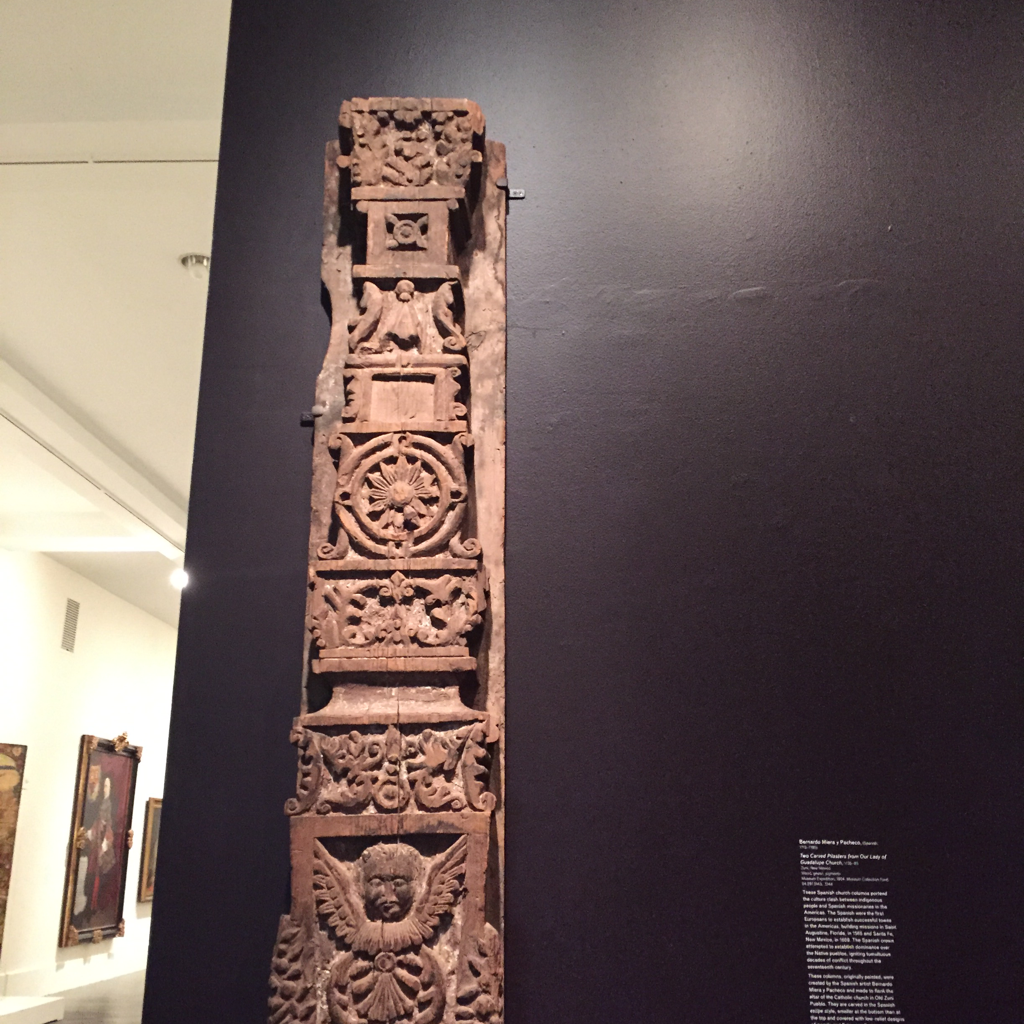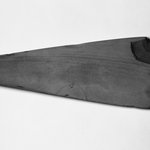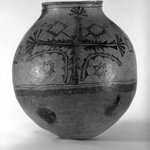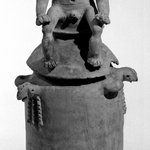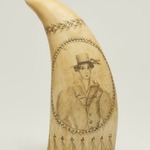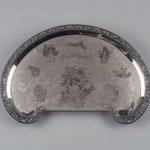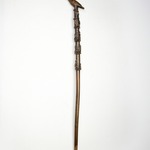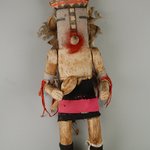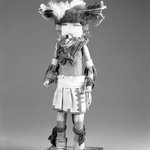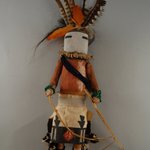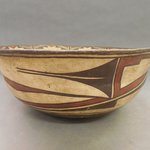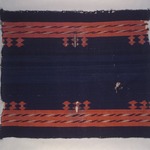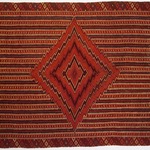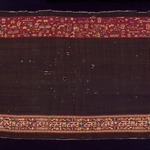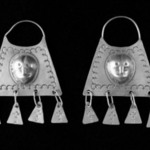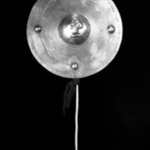
Carved Pilaster from Our Lady of Guadalupe
Arts of the Americas
These Spanish church columns portend the culture clash between indigenous people and Spanish missionaries in the Americas. The Spanish were the first Europeans to establish successful towns in the Americas, building missions in Saint Augustine, Florida, in 1565 and Santa Fe, New Mexico, in 1609. The Spanish crown attempted to establish dominance over the Native pueblos, igniting tumultuous decades of conflict throughout the seventeenth century.
These columns, originally painted, were created by the Spanish artist Bernardo Miera y Pacheco and made to flank the altar of the Catholic church in Old Zuni Pueblo. They are carved in the Spanish estípe style, smaller at the bottom than at the top and covered with low-relief designs of angels and European flowers.
For their new Catholic church at Zuni Pueblo, indigenous people chose which European religious traditions and styles to incorporate into their own ancient customs. Today, the church walls are painted with large murals of sacred Kachina dancers, and the Christian cross above the altar is decorated with local flora and fauna.
These columns, originally painted, were created by the Spanish artist Bernardo Miera y Pacheco and made to flank the altar of the Catholic church in Old Zuni Pueblo. They are carved in the Spanish estípe style, smaller at the bottom than at the top and covered with low-relief designs of angels and European flowers.
For their new Catholic church at Zuni Pueblo, indigenous people chose which European religious traditions and styles to incorporate into their own ancient customs. Today, the church walls are painted with large murals of sacred Kachina dancers, and the Christian cross above the altar is decorated with local flora and fauna.
CULTURE
A:shiwi (Zuni Pueblo)
MEDIUM
Wood, gesso, pigments
DATES
1701–1800
DIMENSIONS
103 1/2 x 14 in. (256.5 x 36.0 cm) (show scale)



COLLECTIONS
Arts of the Americas
ACCESSION NUMBER
04.297.5143
CREDIT LINE
Museum Expedition 1904, Museum Collection Fund
CATALOGUE DESCRIPTION
Around 1700 the distinctive estípite column with its angular profile - widest in the middle of the shaft, narrower at the base and capital - became popular in Spain, particularly in Andalusia. Its transmission to the New World occurred when Spanish artist Jerónimo Balbás traveled to Mexico to design an altar screen for the cathedral. His Altar of the Kings (1718-37) included numerous polychrome and gilded estípite columns, which were rapidly copied and, unlike in Spain, also applied to some stone facades.
The first known use of estípite columns on the northern frontier of New Spain is on the carved and painted stone altar of the castrense chapel (1761) in the style of Spanish-born artist Captain Bernardo Miera y Pacheao (1714-1785). The columns from the Lady of Guadalupe at Zuni Pueblo represent the second known example of this style in New Mexico and are exceptionally well-executed, provincial examples of the form. These were apparently gessoed and polychromed, not layered with gold leaf like estípite in central Mexico.
The carving includes standard elements of the late Baroque or Estípite Baroque style characterized by Rococo decorative details such as geometric compartments in the shape of squares, circles, and rectangles as well as opposing S- and C-scroll motifs, seen on the upper shaft. The lower shaft displays chevrons, winged cherubs, vegetal filler overlapping the shaft's frame, and suspended bunches of Eucharistic grapes.
Photographs and illustrations from the mid-to-late nineteenth century depict the altar screen with four large estípite columns (this one and three counterparts). The altar screen originally included a large oil painting of the Virgin of Guadalupe, images of Saint Dominic, Francis, Michael, and Gabriel, and a relief of God the Father at the top.
EXHIBITIONS
MUSEUM LOCATION
This item is not on view
CAPTION
Attributed to Bernardo Miera y Pacheco. Carved Pilaster from Our Lady of Guadalupe, 1701–1800. Wood, gesso, pigments, 103 1/2 x 14 in. (256.5 x 36.0 cm). Brooklyn Museum, Museum Expedition 1904, Museum Collection Fund, 04.297.5143. Creative Commons-BY (Photo: Brooklyn Museum, 04.297.5143.jpg)
IMAGE
overall, 04.297.5143.jpg. Brooklyn Museum photograph
"CUR" at the beginning of an image file name means that the image was created by a curatorial staff member. These study images may be digital point-and-shoot photographs, when we don\'t yet have high-quality studio photography, or they may be scans of older negatives, slides, or photographic prints, providing historical documentation of the object.
RIGHTS STATEMENT
Creative Commons-BY
You may download and use Brooklyn Museum images of this three-dimensional work in accordance with a Creative Commons license. Fair use, as understood under the United States Copyright Act, may also apply.
Please include caption information from this page and credit the Brooklyn Museum. If you need a high resolution file, please fill out our online application form (charges apply).
For further information about copyright, we recommend resources at the United States Library of Congress, Cornell University, Copyright and Cultural Institutions: Guidelines for U.S. Libraries, Archives, and Museums, and Copyright Watch.
For more information about the Museum's rights project, including how rights types are assigned, please see our blog posts on copyright.
If you have any information regarding this work and rights to it, please contact copyright@brooklynmuseum.org.
RECORD COMPLETENESS
Not every record you will find here is complete. More information is available for some works than for others, and some entries have been updated more recently. Records are frequently reviewed and revised, and we welcome any additional information you might have.


